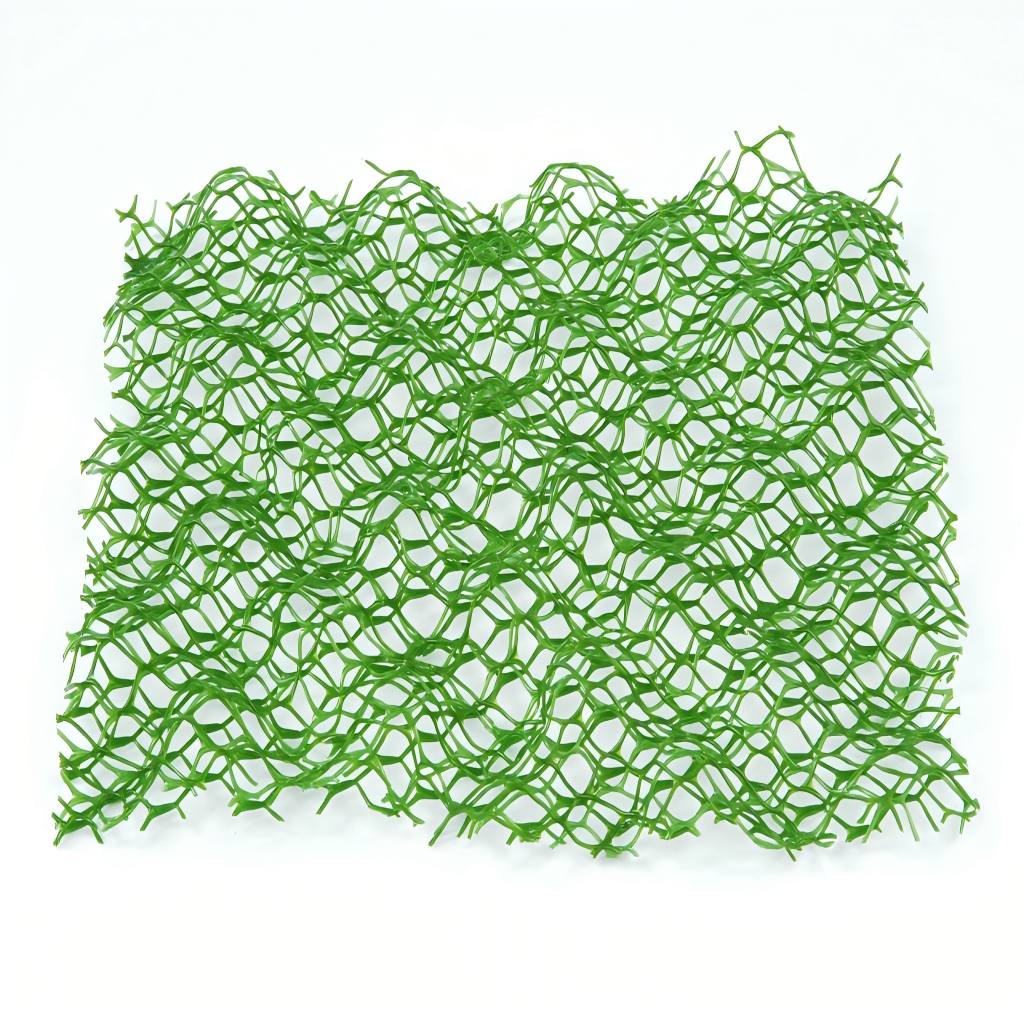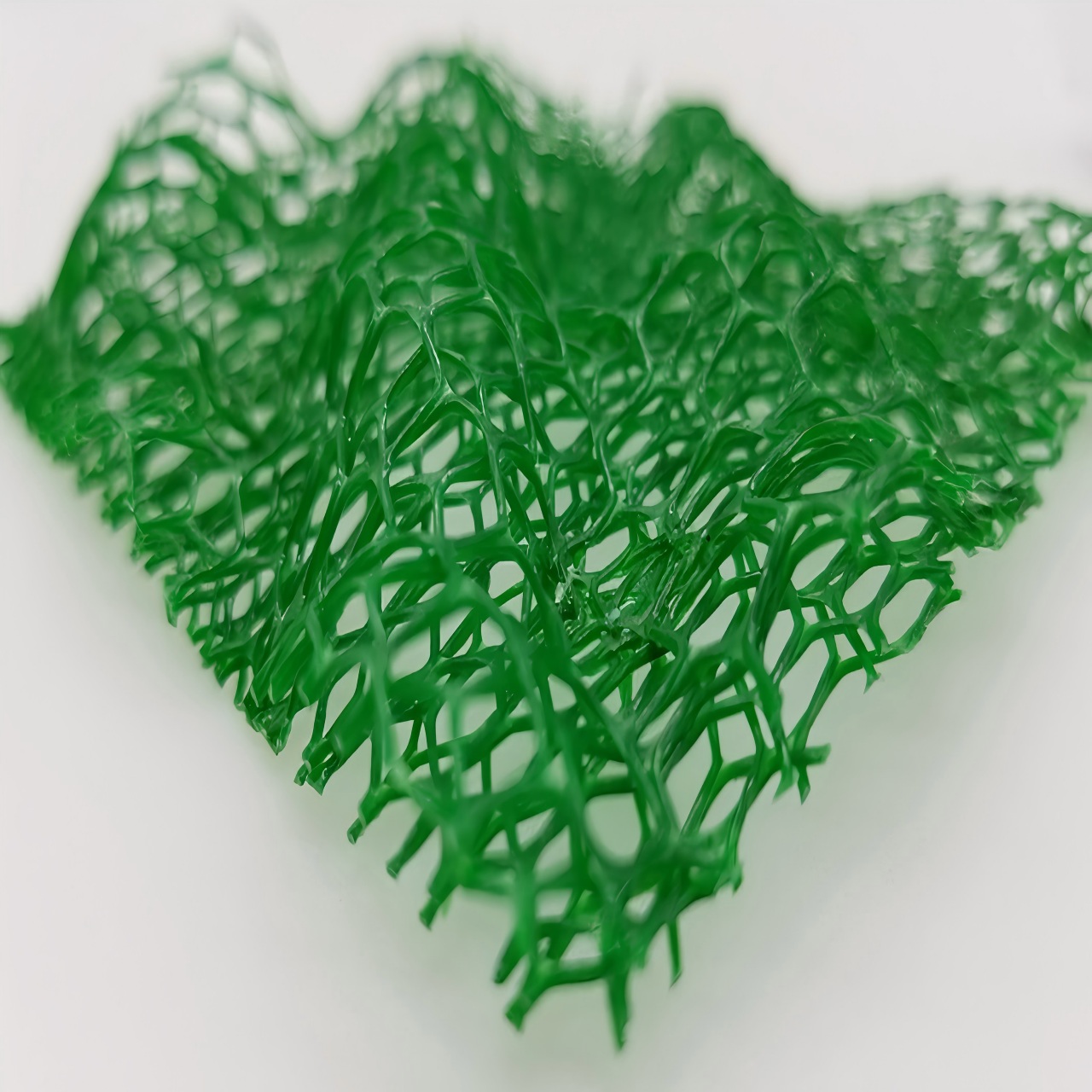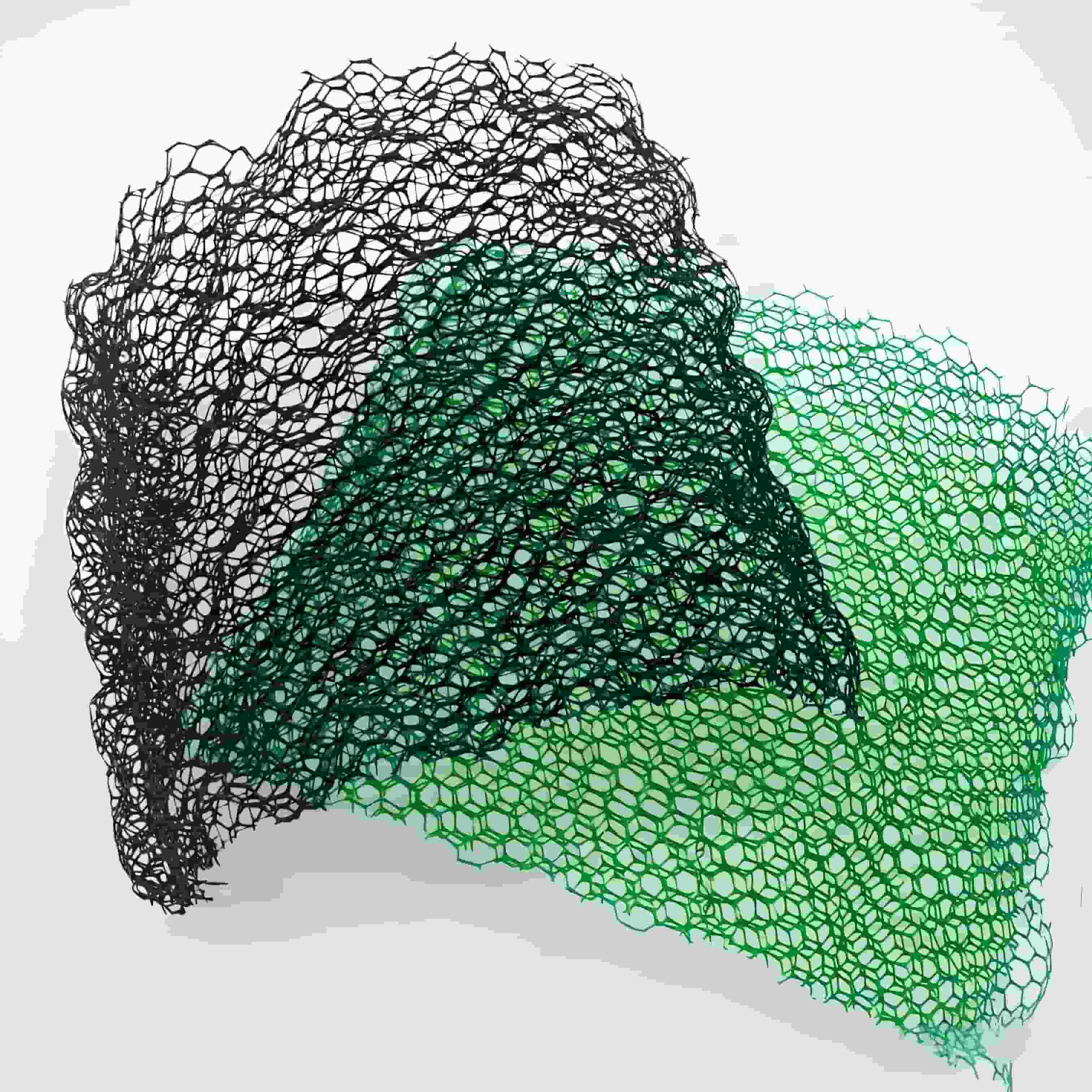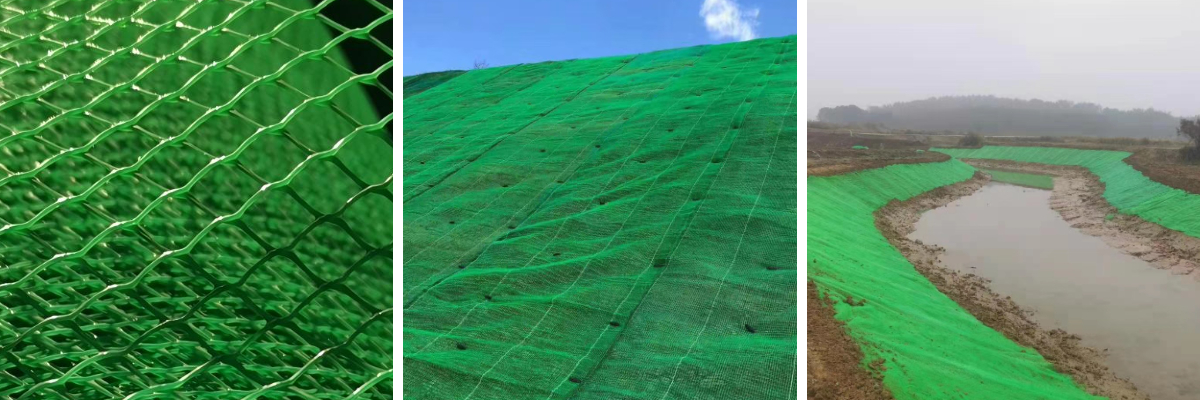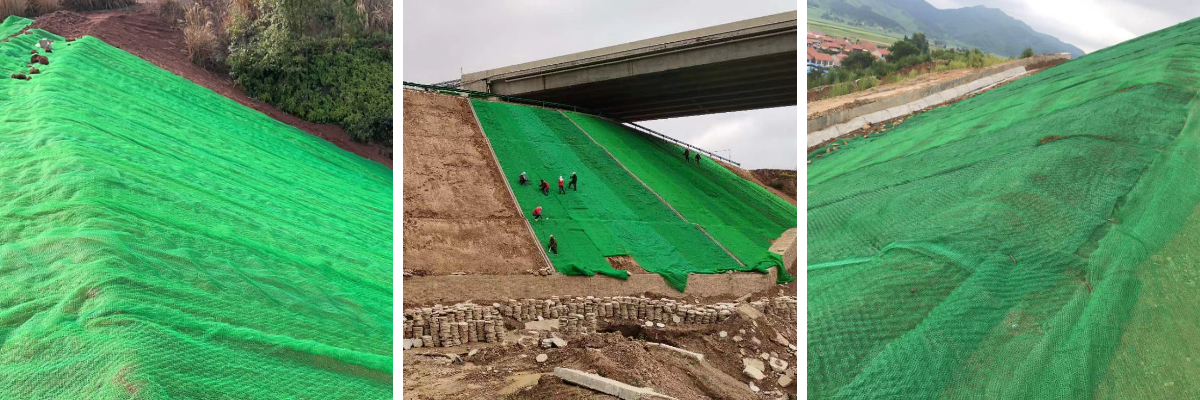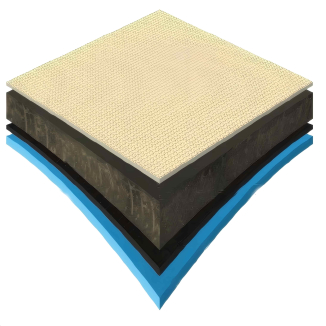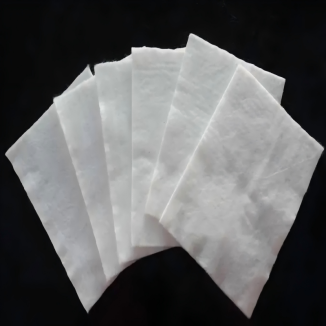Slope Revegetation
1.Good protective performance: During the period when the turf has not grown yet, it can protect the land surface from wind and rain erosion and prevent soil erosion. The composite protective layer formed by the growth of plants can withstand the scouring of water flow with high water level and large flow velocity.
2.Strong soil fixation and seed preservation function: It can firmly keep the grass seeds evenly distributed on the slope surface, unaffected by wind and rain, and has excellent soil fixation performance. Tests have shown that before the turf is formed, when the slope angle is 45 degrees, the soil fixation and retardation rate of the three-dimensional vegetation mat is as high as 97.5%.
3.Promote plant growth: The black mesh mat can absorb a large amount of heat, increase surface humidity, promote seed germination, and extend the plant growth period. Its three - dimensional structure also enables water and nutrients to be evenly distributed in space, providing a good micro - environment for plant growth.
4.Energy dissipation and sedimentation: With a rough surface, it can generate vortices on the surface of the mesh mat when wind or water flows, thus reducing energy and causing carried substances to deposit in the mesh mat.
Product Introduction:
Slope Revegetation-The three-dimensional geogrid mat is a new type of civil engineering material. It belongs to the reinforcement material in the field of new material technology in the national high-tech product catalog and is mainly used for grass planting and soil fixation.
Structure:
It is composed of multiple layers of plastic concave-convex nets and biaxially stretched planar nets. At the intersection points, they are bonded after hot melting to form a stable three-dimensional net structure. The surface layer has an uneven appearance, with a loose and flexible material, leaving more than 90% of the space available for filling soil and sand grains. The bottom biaxially stretched net has the characteristics of low elongation and high strength.
Working Princip
leIncreasing Slope Roughness: When laid on the slope, its three - dimensional structure forms countless small triangular spaces, which greatly increases the roughness of the slope, reduces the velocity of slope runoff, and decreases the scouring force of water flow on the slope soil.
Intercepting Rainwater: These spaces are like small "reservoirs", which can effectively intercept rainwater, allowing the water to fully penetrate into the soil and providing sufficient moisture for grass seed germination and plant growth.
Forming an Organic Whole: As the grass seeds germinate and grow, the plant roots gradually penetrate into the pores of the mesh mat and tightly entangle with the soil, making the plant roots and the geogrid mesh mat form an organic whole, enhancing soil cohesion and improving slope stability.
Product Parameters:
Item | EM2 | EM3 | EM4 | EM5 |
Unit mass per area / (g/m2) | ≥220 | ≥260 | ≥350 | ≥430 |
thickness /mm | ≥1O | ≥12 | ≥14 | ≥16 |
Width deviation /m | ±1.0 | |||
length variation /m | ±1 | |||
Longitudinal tensile strength/(KN/m) | ≥O. 8O | ≥1.4 | ≥2. O | ≥3. 2 |
Tensile strength in the transverse direction / (KN/m) | ≥O. 8O | ≥1.4 | ≥2. O | ≥3. 2 |
Product Applications:
I. Transportation Engineering Field
Highway Slope
ProtectionIt is used for slope greening and protection of expressways, national highways, provincial highways, etc. It can prevent slope collapse and soil erosion caused by rainwater scouring, and improve the road landscape through vegetation growth.
Application Scenarios: Steep slopes of mountainous highways, slopes of filled sections, exposed slopes of excavated sections, etc.
Railway Slope
ProtectionIt is applicable to the ecological protection of railway subgrade slopes, reducing the impact of train operation vibration on slope stability, while reducing dust pollution and beautifying the environment along the railway.
Application Scenarios: Slopes at the entrances and exits of railway tunnels, slopes at the connection sections of bridges, railway slopes in desert or loess areas, etc.
II. Water Conservancy Project Field
River and Dam
Protection
Laid on both sides of the river and the dam slope, it blocks the scouring of the water flow through a three - dimensional structure. At the same time, it uses the roots of plants to reinforce the soil, enhance the dam's ability to resist flood impact, and restore the river ecosystem.
Application Scenarios: Bank protection of rivers and lakes, slopes of reservoir dams, ecological river regulation projects, etc.
Slope Treatment of Reservoirs and Channels
Used for slope protection of the slopes around reservoirs and irrigation channels, it prevents slope landslides caused by water level changes and reduces the impact of soil erosion on water quality.
III. Mine and Environmental Restoration Field
Mine Slope Ecological Restoration
Lay it on the bare slopes after mine exploitation. Promote vegetation growth through soil fixation and water retention, accelerate mine ecological restoration, and reduce the risks of geological disasters such as debris flows and landslides.
Application Scenarios: Open-pit mine slopes, slag heap slopes, quarry restoration projects, etc.
Tailings Dam and Waste Dumping Site Protection
Used for the covering protection of the surface of the tailings dam and the waste dumping site to prevent dust pollution. At the same time, stabilize the slag body through vegetation soil fixation and reduce the risk of environmental pollution.
IV. Municipal and Landscape Engineering Field
Urban Slope and Green Space Construction
Applied to the slope landscape creation in urban parks and community greening, such as hillside green spaces and artificial lake slopes. It can not only achieve ecological protection but also enhance the beauty of urban greening.
Application Scenarios: Slopes of municipal squares, slopes of urban road isolation belts, slopes of roof greening (lightweight mesh mats), etc.
Riverside and Wetland Ecological Renovation
Used on the river slopes of urban inland rivers and wetland parks. Combined with the planting of aquatic plants, it constructs ecological revetments, improves the urban water environment, and creates habitats for organisms.
The core of the application of three-dimensional geogrid mats lies in "ecological protection + engineering reinforcement". Their characteristics of lightweight, low cost, and easy construction give them significant advantages in various scenarios that require slope stabilization and vegetation restoration, especially in engineering fields with high requirements for the ecological environment.


